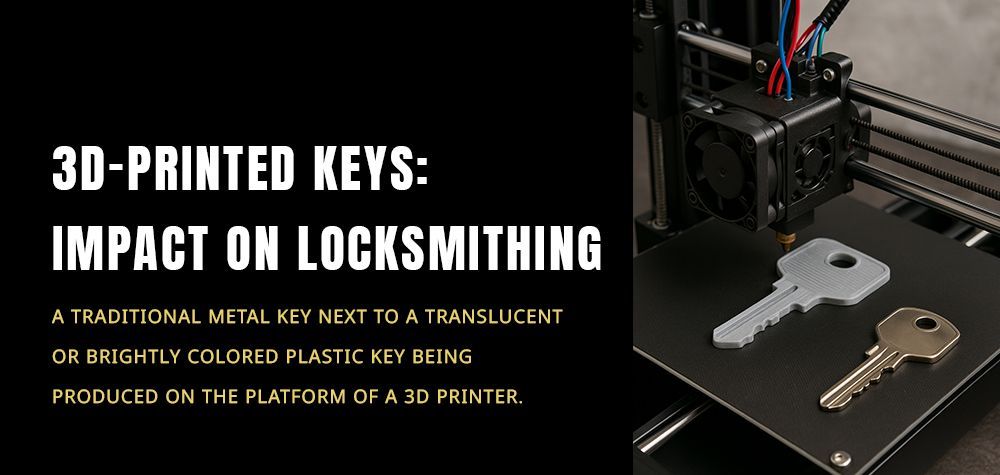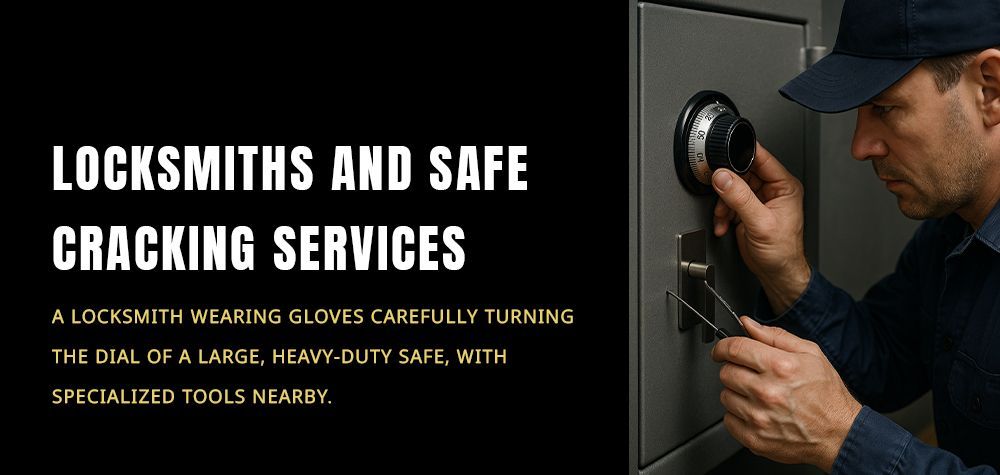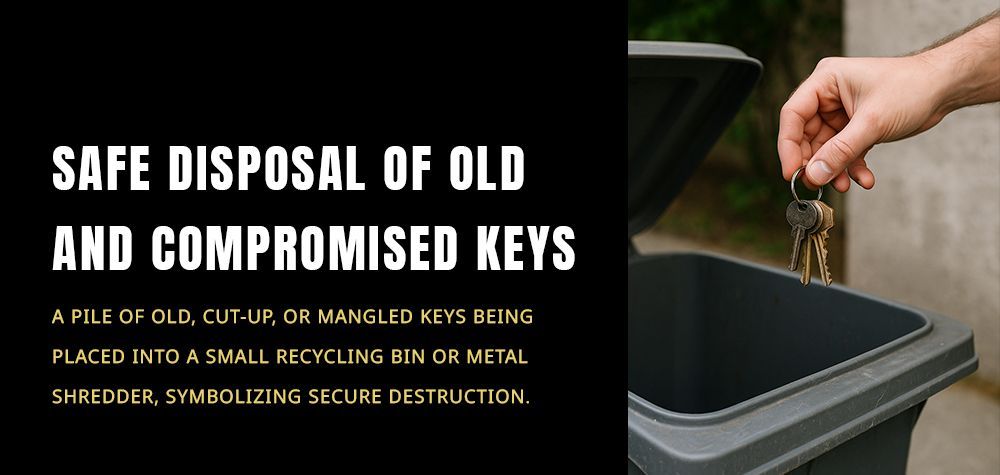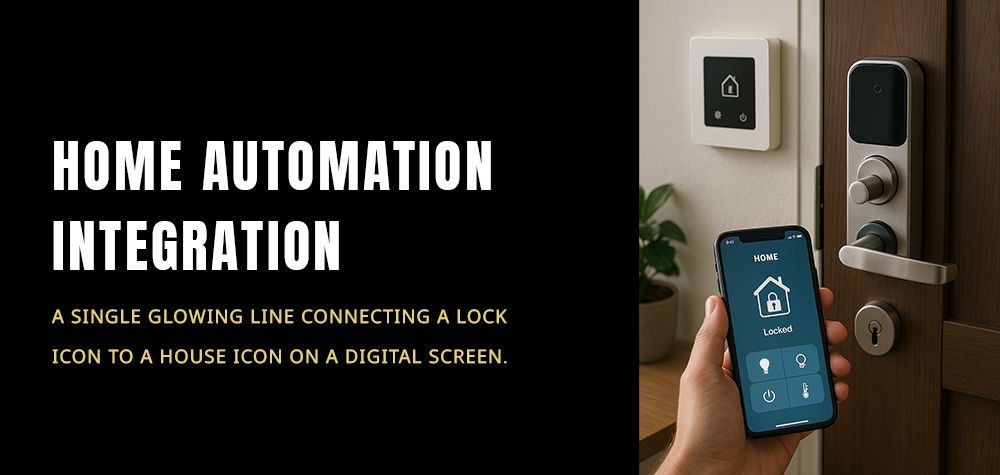What to Do If Your Front Door Lock Keeps Spinning
A front door lock that just spins when you insert the key isn’t just frustrating—it’s a clear sign that something deeper is wrong. Whether you're locked out or dealing with a door that won’t secure properly, a spinning lock can be both an inconvenience and a safety concern. Fortunately, this is a common issue with manageable fixes. The key is knowing what causes it, what risks to look out for, and what steps you can take—either as a quick DIY or with a locksmith's help.
Best tools for emergency home lockout kits!
Why Does Your Front Door Lock Keep Spinning?
At the core of a spinning lock is a failure in the connection between the key and the internal locking mechanism. This usually happens when the tailpiece or cam inside the lock—parts responsible for turning the bolt when you turn your key—becomes detached or broken. In some cases, the entire cylinder might be spinning within the door hardware, which could mean a mounting screw has come loose or the lock has worn out over time.
Another possibility is damage caused by excessive force, a failed attempt at lock picking, or even misalignment after repeated use. If the lock feels loose or rotates without resistance, chances are the internal parts are no longer doing their job.
Identifying the Problem: What Are the Signs?
A spinning lock typically means you can insert and turn your key, but the bolt doesn’t move. You might also hear a clicking sound or feel no resistance as you twist the key. Try this test: hold the key steady and gently pull back while turning. If the lock engages, it could be a minor misalignment. If it continues spinning, you’re dealing with internal disconnection.
This isn’t something to ignore. A lock that doesn’t engage properly won’t secure your home, and if left unchecked, the issue can worsen or lead to complete lock failure.
Step-by-Step: How to Fix a Spinning Door Lock
Step 1: Remove the Lock Cylinder
Begin by unscrewing the faceplate on the inside of the door to access the lock cylinder. In most cases, two screws hold it in place. Once removed, gently pull out the cylinder and inspect the tailpiece or cam at the back.
Step 2: Inspect the Tailpiece or Cam
If the tailpiece is broken, misaligned, or detached from the locking mechanism, it won’t engage with the latch. A minor issue like a stripped screw or a misaligned cam can often be fixed with replacement parts available at a hardware store.
Step 3: Reconnect or Replace Internal Components
If the tailpiece has slipped out of place or become worn down, try reconnecting it securely. If it’s broken, you’ll need to replace it. Some homeowners choose to replace the entire cylinder if the damage is extensive or the lock is old.
Step 4: Reassemble and Test the Lock
Once the part is replaced or reattached, reinstall the cylinder and tighten all screws. Test the key to ensure that it now turns the bolt properly without spinning freely.
Step 5: Call a Locksmith if Necessary
If you’re unsure about taking apart the lock or if the internal parts are too damaged to repair, calling a professional locksmith is the safest route. They can repair, rekey, or replace the lock with minimal fuss—and ensure your home stays secure.
What Are the Risks of a Spinning Lock?
A freely spinning lock compromises the main function of your door: security. A faulty lock is an open invitation to break-ins, especially if the issue is visible from the outside. If you're unable to lock or unlock the door reliably, you also risk being locked out or having difficulty exiting during an emergency.
There’s also the chance of doing more damage if you attempt a DIY fix without understanding the lock's internal mechanics. Forcing a spinning lock to work might strip internal parts further or crack the housing entirely.
When to Repair vs. When to Replace
If your lock is relatively new and the issue is just a loose component or minor misalignment, a simple repair can restore function. However, older locks with significant wear—or locks that have been previously tampered with—might need full replacement.
Modern locks, especially smart or high-security options, often have more intricate parts. In such cases, replacement may be quicker and more cost-effective in the long run.
Expert Advice: How to Prevent Future Lock Spinning
One of the best ways to prevent this issue is regular maintenance. Lubricate your locks annually using graphite powder or silicone-based lubricant to keep internal parts functioning smoothly. Avoid over-tightening screws when installing a lock—this can stress the tailpiece and cam, increasing wear and tear.
Also, be gentle with your key. Forcing the key to turn or yanking it out quickly can misalign or loosen internal components over time. If you notice the lock starting to stick or resist turning, it’s better to address it early before the spinning begins.
Final Thoughts: Don't Let a Spinning Lock Leave You Vulnerable
A spinning door lock isn’t just an inconvenience—it’s a red flag. It signals that the connection between your key and your home’s security is broken, both literally and figuratively. Whether you choose to fix it yourself or call in a pro, addressing it quickly is essential to maintaining your safety and peace of mind.
Stay proactive, perform regular checks, and don’t hesitate to upgrade if your locks are outdated. Because when it comes to securing your home, every turn of the key should feel solid, certain, and secure.
Call Us Any Time!









